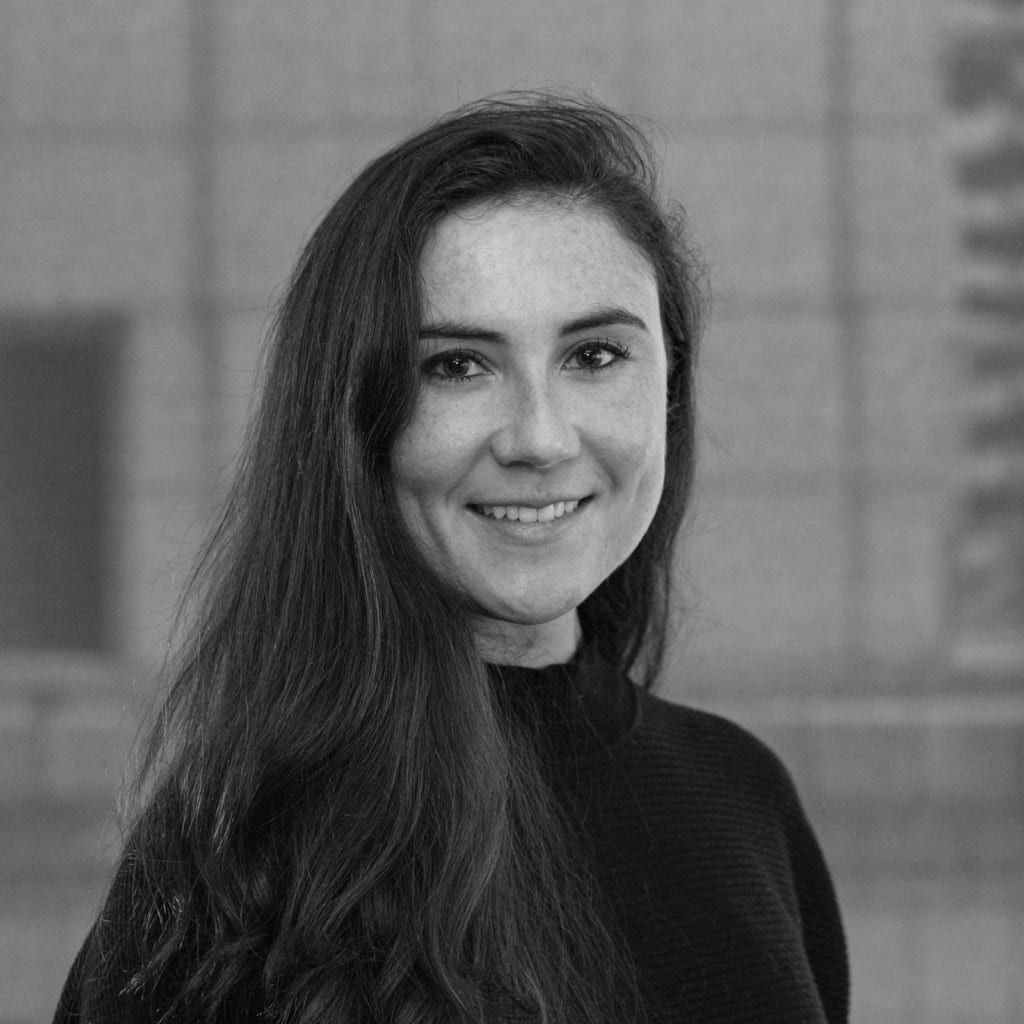Structural engineer Gabriela Garcia ’10 now works on some of the world’s most unusual buildings
If Gabriela Garcia’s career could have been predicted by just one childhood achievement—and, of course, there’s never just one—a strong candidate would be her success building a toothpick bridge in Brock Dunn’s eighth grade science class at Williston.
Fifteen years later, Garcia continues to demonstrate her aptitude for engineering. A structural engineer for the multinational design firm Arup, she is on the ground floor of projects in more than 140 countries. Particularly remarkable is her current project: a 230,000-square-foot expansion to the American Museum of Natural History, in New York City, where she now lives. Construction began in 2019 on the $383 million Richard Gilder Center for Science, which will house an insectarium and a butterfly vivarium, and provide an elegant new space for the museum’s STEM initiatives.
On this project, Garcia designed the main structural form of the atrium and is currently leading a team through the construction phase of that design. She designed the thickness of the shotcrete, the sprayable concrete, as well as all the reinforcements, and is heading up the 3D modeling team, which provides models to the contractor. “It’s kind of been my baby for the past four years,” Garcia says.
Previously, Garcia worked on Solar Carve, a glass tower on Manhattan’s 10th Avenue (shown at right) whose jagged shards, she explained, are “designed to maximize sun exposure” on the adjacent High Line park.
Garcia’s firm is perhaps best known for the iconic Sydney Opera House, designed in the 1950s by the company’s founder, Ove Arup. The London-based company also designed the Beijing National Stadium (better known as the “Bird’s Nest”), and is involved in the China Resources Headquarters, a nearly 1,300-foot bamboo-shoot-shaped building on Shenzhen Bay.
Other Arup projects include Northeastern University’s Interdisciplinary Science and Engineering Complex, and Camp Adventure, a spiraling treetop observation tower, with a nearly 2,100-foot ramp made of weathered steel and locally sourced oak, in Denmark’s largest treetop climbing park.
Garcia, who is the daughter of Williston Spanish teacher Eugenio Garcia and Laurie Garcia and grew up on campus, has worked at Arup for nearly five years. After graduating from Williston, she attended Cornell University, earning her undergraduate degree in civil engineering in 2014 and her master’s degree in structural engineering the following year. She credits Cornell, where many of her class and lab mates were female, with accepting and encouraging more gender diversity in STEM.
As early as middle school, Garcia thought she might want to be an architect, but the diverse and challenging math and science classes at Williston led her in a slightly different direction. As a first-year student who “wanted to get ahead in math,” she took both Geometry and Algebra II so she could later take BC and Multivariable Calculus with Dr. Alan Lipp. “Being able to take that gave me a step up when I started at Cornell,” she explains. She also took AP Physics with Amanda Rappold.
In a field still traditionally dominated by men, Garcia said she has come to appreciate the female engineers and leaders she’s worked with, in particular Michelle Roelofs, her manager on the Natural History Museum project.
“In general, men and women are equally respected in this industry, but I think women have to prove themselves right off the bat in order to be respected,” say Garcia, who notes that her current team is predominantly female. “Every once in a while in a meeting, you can tell some people are like, ‘She’s female, I’m going to talk over her,’” says Garcia. Michele has been a role model for me of how to stand her ground and command the respect she deserves.”
To students today who may have ambitions like the ones she first recognized back in middle school, Garcia is quick to offer advice. “Don’t be afraid to push yourself,” she says, adding that her parents encouraged her to pursue her passions from a very early age. “Don’t be afraid to go all in on something you love.” Despite how far she’s come, Garcia still has fond memories of where it all started: the toothpick bridge project in eighth grade. “We either won or came in second, I can’t remember,” Garcia says with a laugh.

